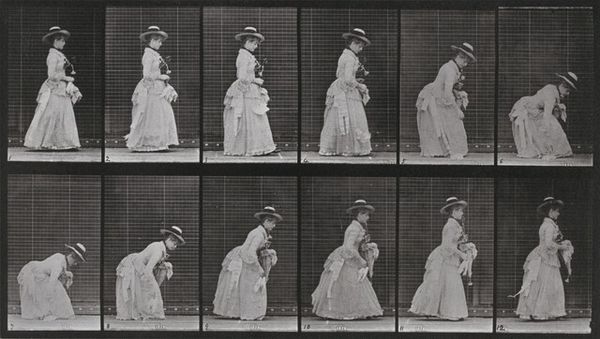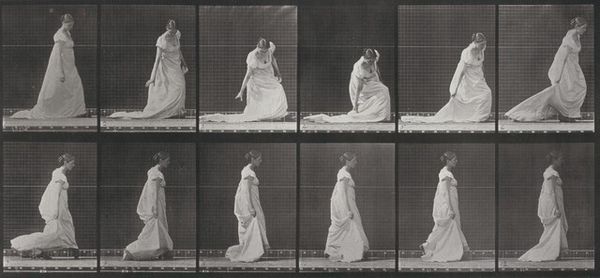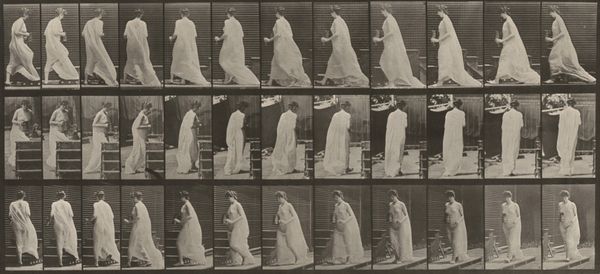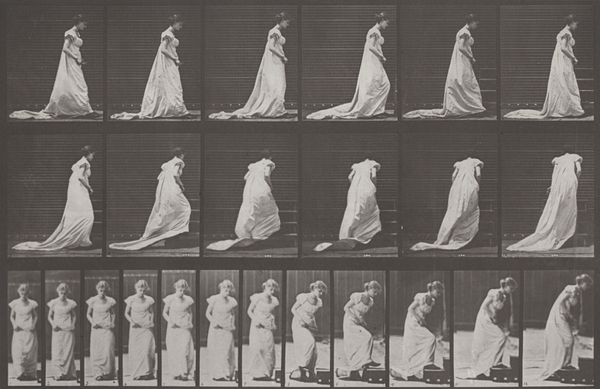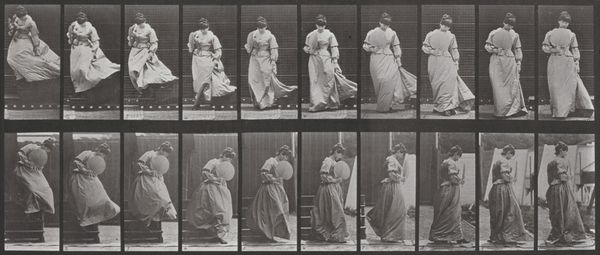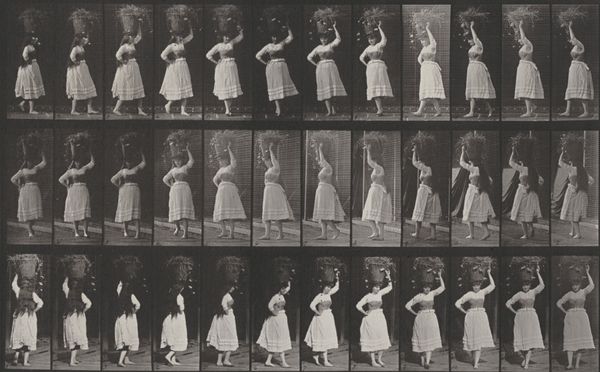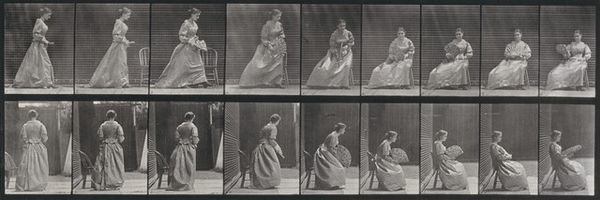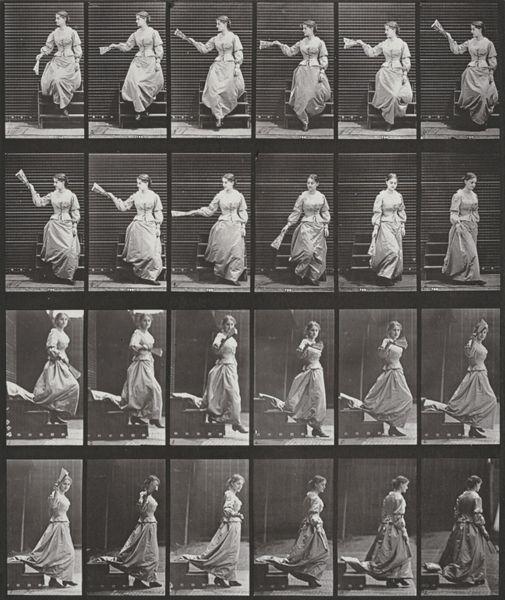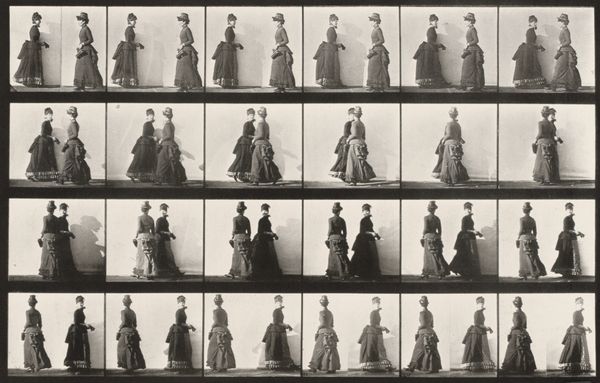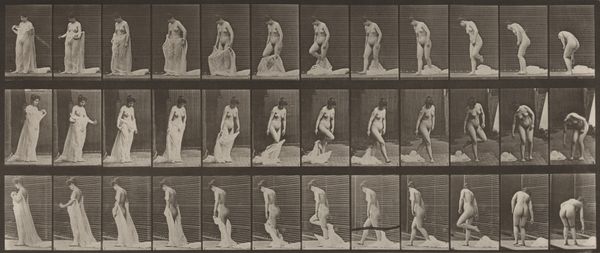
Plate Number 52. Walking, carrying a child, turning around; another child holding on to the woman's dress 1887
0:00
0:00
print, photography, gelatin-silver-print
#
portrait
#
kinetic-art
# print
#
impressionism
#
figuration
#
photography
#
gelatin-silver-print
Dimensions: image: 18.6 × 36.4 cm (7 5/16 × 14 5/16 in.) sheet: 47.4 × 60.2 cm (18 11/16 × 23 11/16 in.)
Copyright: National Gallery of Art: CC0 1.0
Editor: Here we have Eadweard Muybridge's "Plate Number 52. Walking, carrying a child, turning around; another child holding on to the woman's dress," created in 1887, a gelatin silver print. The repetition of the images almost feels like early animation. What stands out to you in this series? Curator: The fascinating aspect here is how Muybridge dissected movement. Consider the immense labor involved in setting up these sequential photographs. He wasn't just capturing a single image, but meticulously orchestrating and recording a specific action through a complex technological apparatus. It highlights the means of production involved in creating an illusion of movement. Think about the social context; the late 19th century obsessed with technological advancement and scientific observation being applied even to the everyday act of walking. Editor: So, the artistry isn't just in the final product but the entire process? Curator: Exactly! It pushes us to reconsider our understanding of art. Where does 'art' begin? Is it with the intention, the process, the materials – in this case, photographic technology and the chemical process – or the final displayed print? Also, it subtly hints at the labor expectations placed on women, doesn't it? The act of caring for children now immortalized through photographic science, turned into something to be measured and dissected. The making and consumption of Muybridge’s work highlight a shift toward industrialisation and a changing cultural landscape. Editor: I see what you mean. Thinking about the labor and social context behind the image really does change how I view it. I'm now seeing the photographs beyond their immediate representation. Curator: Precisely, we must ask ourselves, how is it that technology intersects with representations of the everyday and with socio-cultural assumptions.
Comments
No comments
Be the first to comment and join the conversation on the ultimate creative platform.
